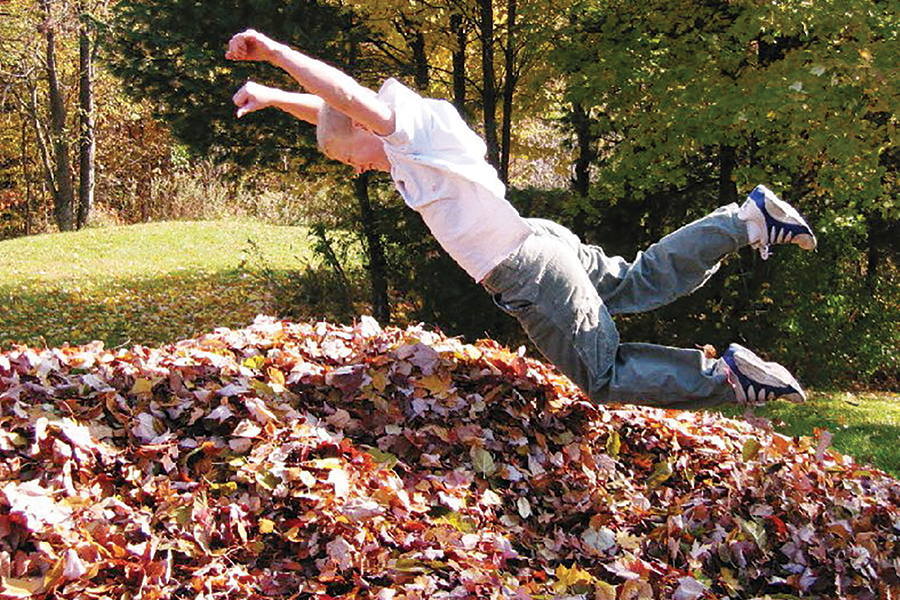By Lisa Watters Lain, Arizona’s garden gal
Autumn gardens are a time of change and preparation for the winter and spring that follow. With just a bit of effort, your landscape remains healthy and stands out from the rest. It took one crisp morning to perform the “Essential Eight” on this list of tasks to complete before Thanksgiving for a healthy, stress-free landscape.
1
Get on the aphids! Aphids hatch and attack autumn gardens in October. If the leaves and rocks at the base of your trees are glistening like a morning’s dew, aphids have begun their assault. Get on them right away by hosing down these pests with my specially formulated “Multi-Purpose Insect Spray.” It not only eliminates aphids (or any other bug, for that matter) from any landscape, but it also repels them. Good stuff.
2
Feed everything in your landscape. This, the most critical job of fall, is also the easiest! The entire yard should be fed within the next few weeks. I created an all-natural food that is not only people-safe, but it’s pet-safe, too. It’s my 7-4-4 “All Purpose Plant Food.” This food ensures evergreens will keep their rich green color through winter, and it’s a must for spring bloomers like forsythia and lilacs. Native piñon and ponderosa pines should receive this meal to fend off bark beetles, scale, and aphids.
3
Treat your pine trees. Piñon pine scale is the worst witnessed this year, and now is the time treat for it. Treat each tree with my specially formulated, super easy to apply, “Plant Protector.” Dilute it with water in a 2-gallon watering can and apply it at the base of each evergreen. The roots will absorb it and do the rest. Think of it as an antibiotic for trees.
4
Insulate! This step can save you from a plumber’s bill to repair a frozen water system. I buy next spring’s mulch, manure, and shredded bark products and use them throughout the winter as insulating bags. They are perfect to use as cold protection over your valve box lids and around the well house and back flow preventers. The garden will need them anyway next spring, so why not get double duty out of your soil amendments?
5
Plant seasonal flowers. Strategically place some blooming autumn plants in your landscape, raised beds and containers, and you’ll have flowers in bloom through the end of the year. Now is the time to plant winter blooming pansies, kale, mums, violas, broccoli, cabbages, lettuces and cauliflower.
6
Switch weed killers. Once October hits, glyphosate-based weed killers no longer work in the mountains. Now is the time to switch. Use “Weed Beater Ultra” to easily get rid of ragweed, dandelions, and all the other nasty autumn weeds. Spray it on and watch them melt away.
7
De-thatch and feed your lawn. If your lawn looks heat-stressed or doggie-damaged, this is the season to de-thatch before adding that one last feeding of “All Purpose Plant Food” 7-4-4. Two weeks after applying the food, add the granular supplement, “Soil Activator.” This food-activator combination keeps the lawn green long after your neighbors wish they had done the same.
8
Prevent winter weeds. If you have a rock lawn, apply “Weed & Grass Stopper.” Winter weeds like foxtails and dandelions will emerge and become a serious problem just after the holidays. This granular weed stopper prevents weeds from coming back by seed.
Cross these minimal maintenance tasks off your list and you’ll find your winter-blooming flowers brighter, your evergreens greener, and the spring growth more vibrant. If you have questions about any of these eight steps, please stop by the garden center where my staff and I are glad to sort out your concerns.
Until next issue, I’ll see you at Watters Garden Center.
Lisa Watters-Lain can be found throughout the week at Watters Garden Center, 1815 W. Iron Springs Rd in Prescott, or contacted through her website at WattersGardenCenter.com or FB.com/WattersGardenCenter .

